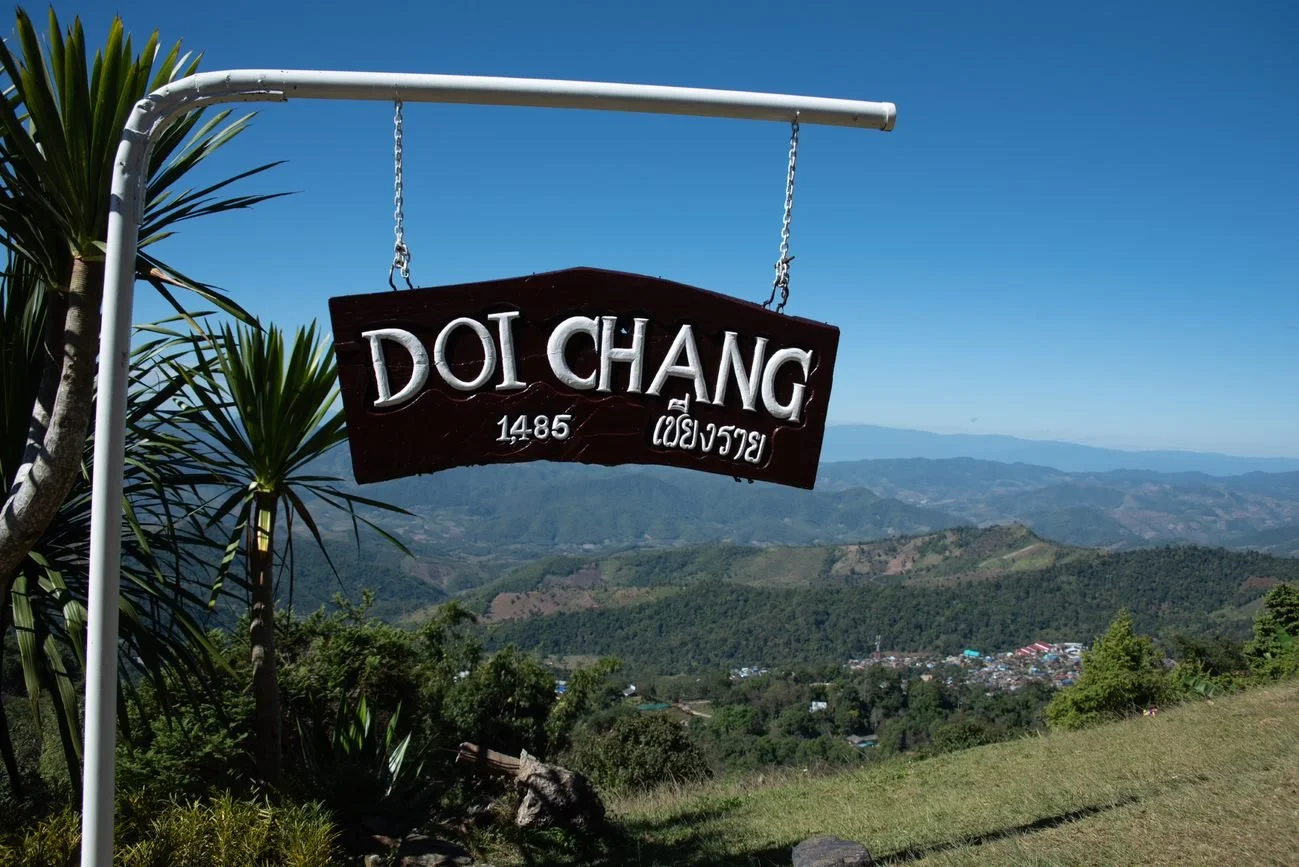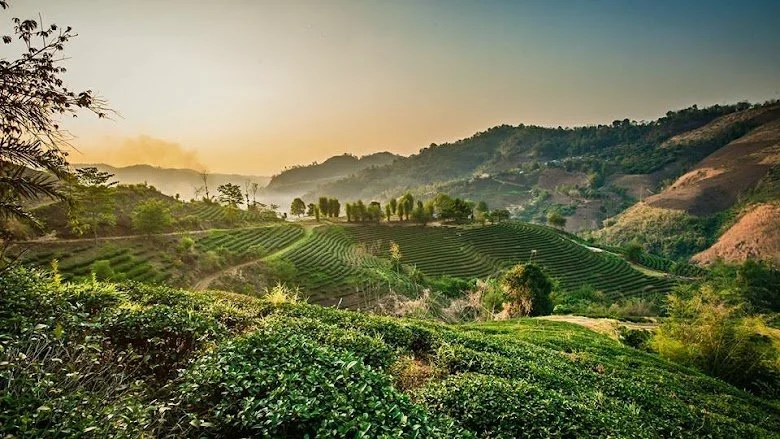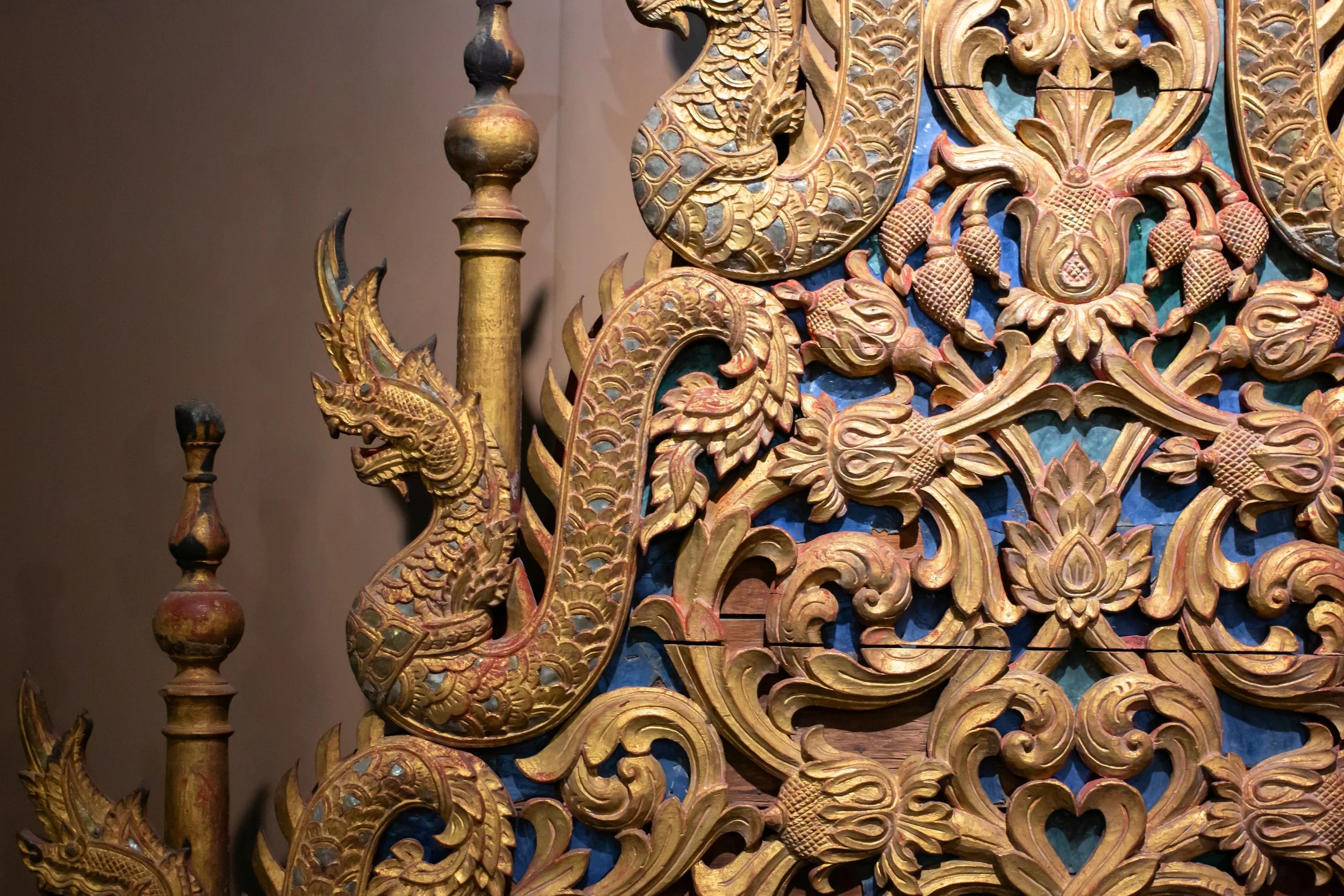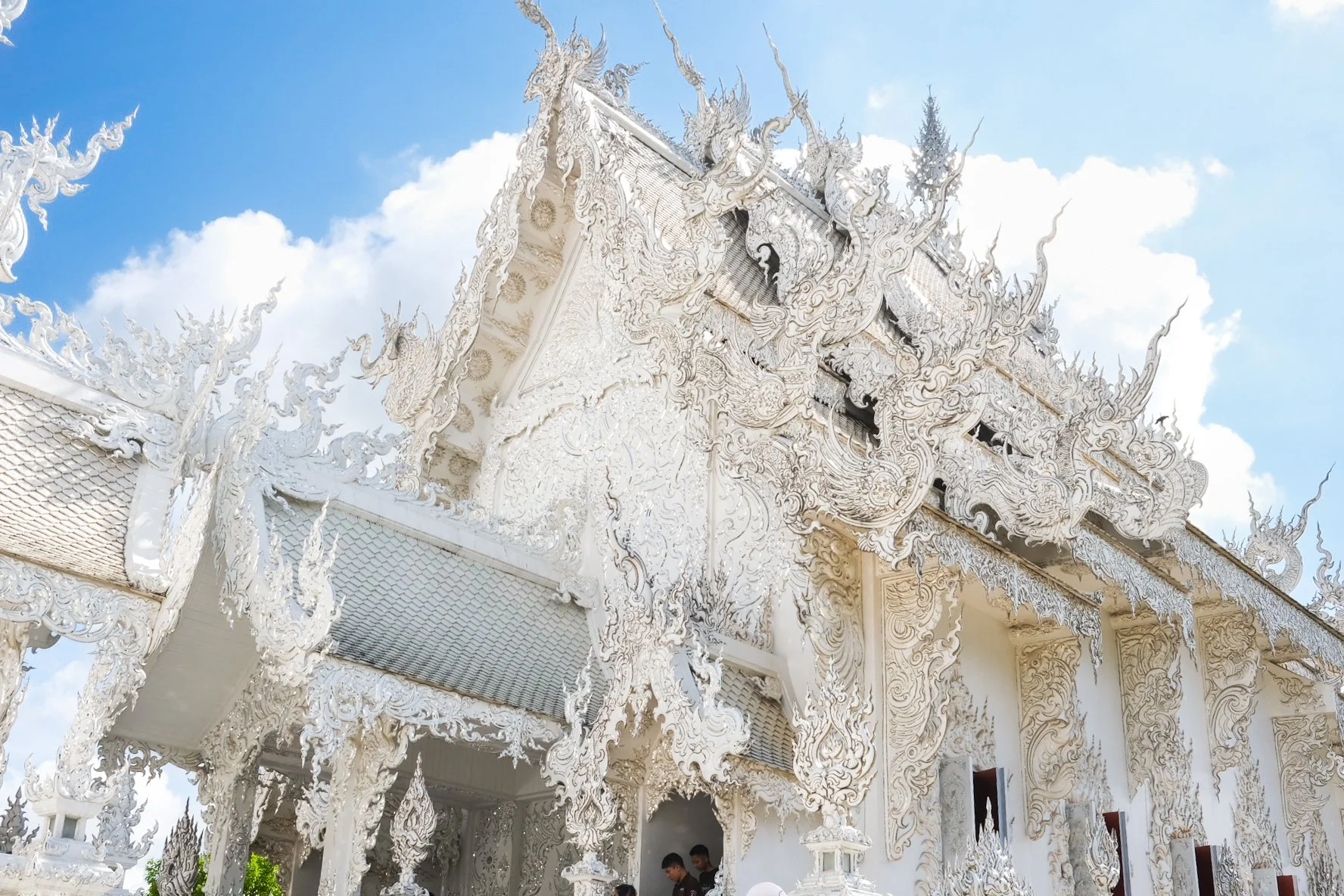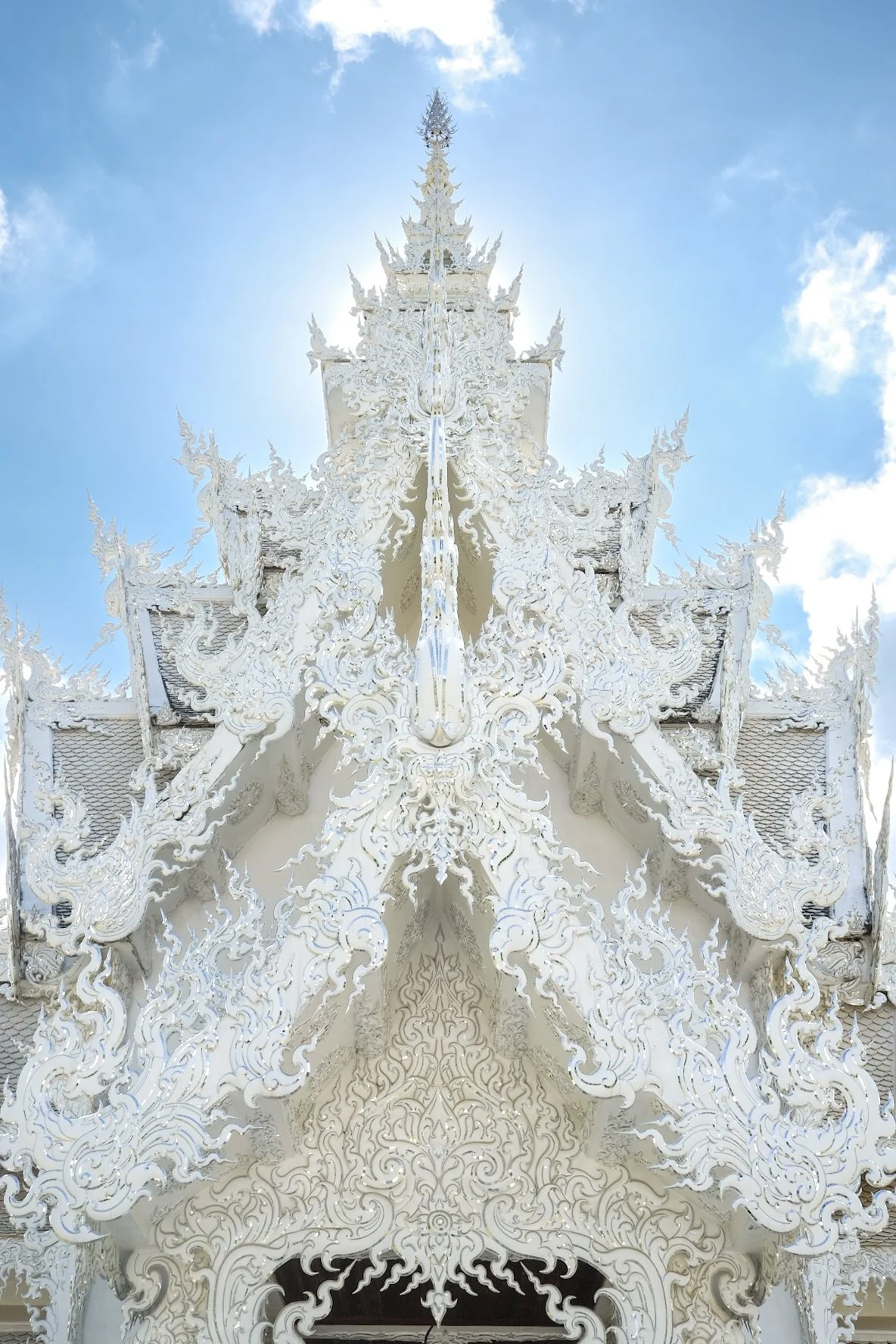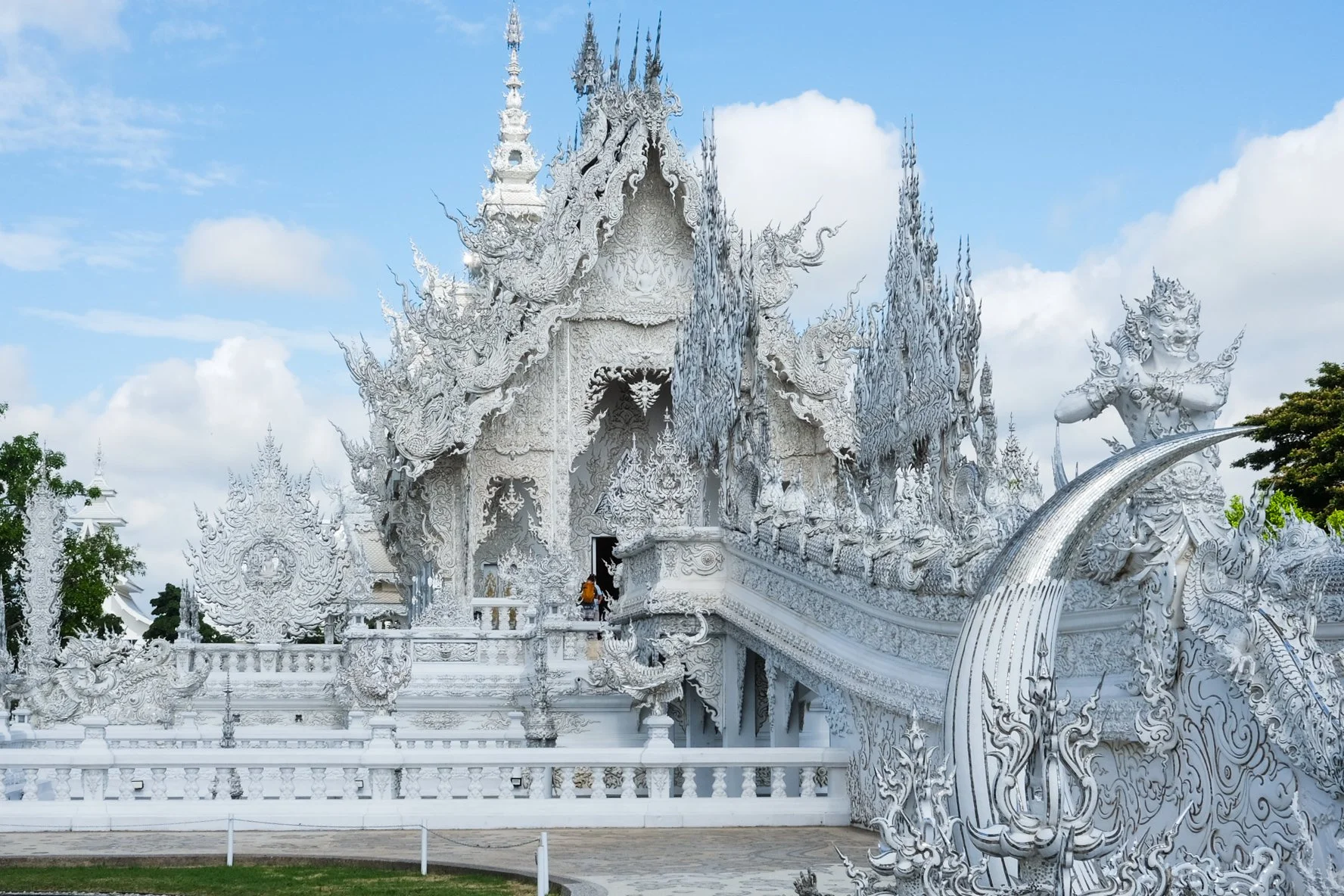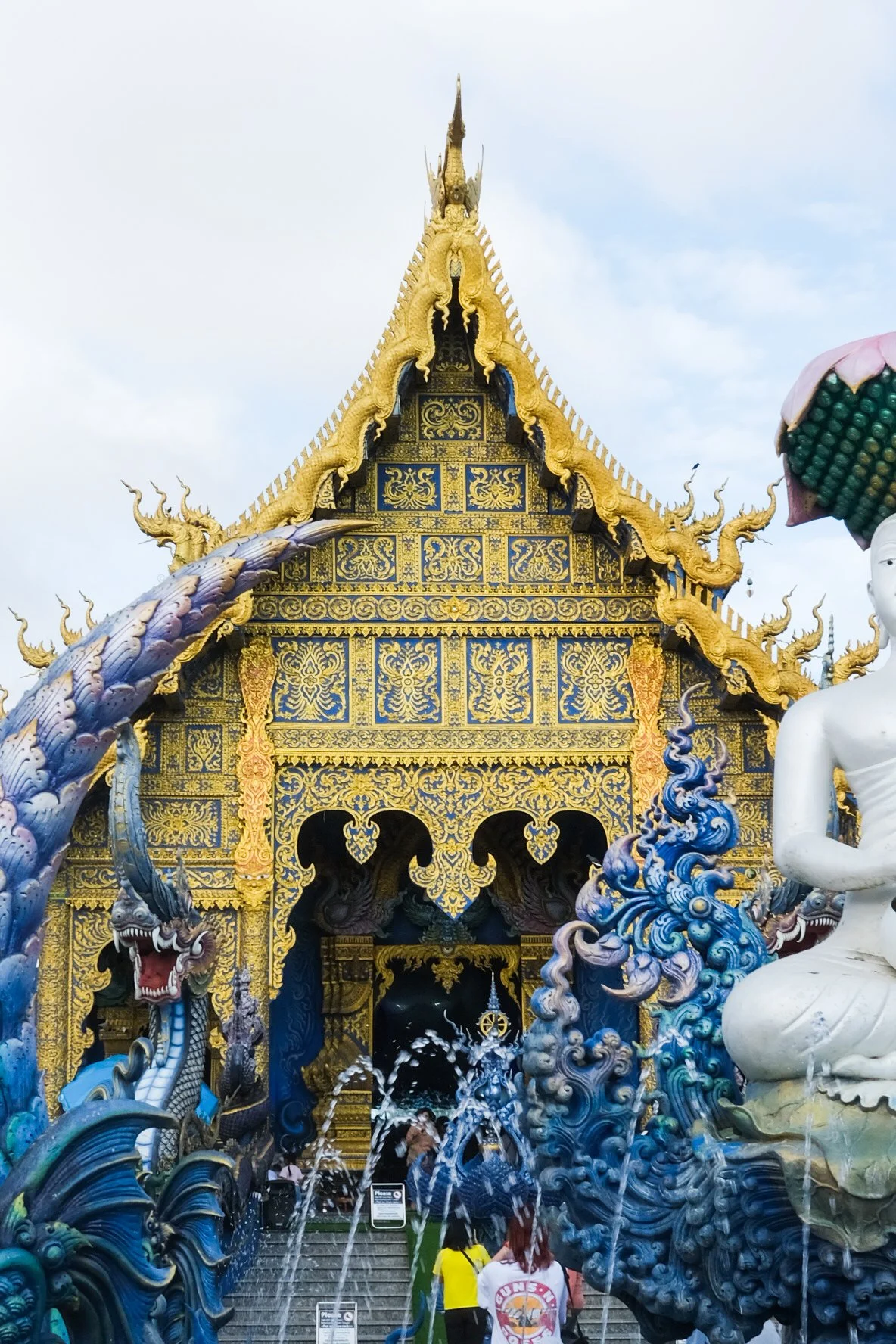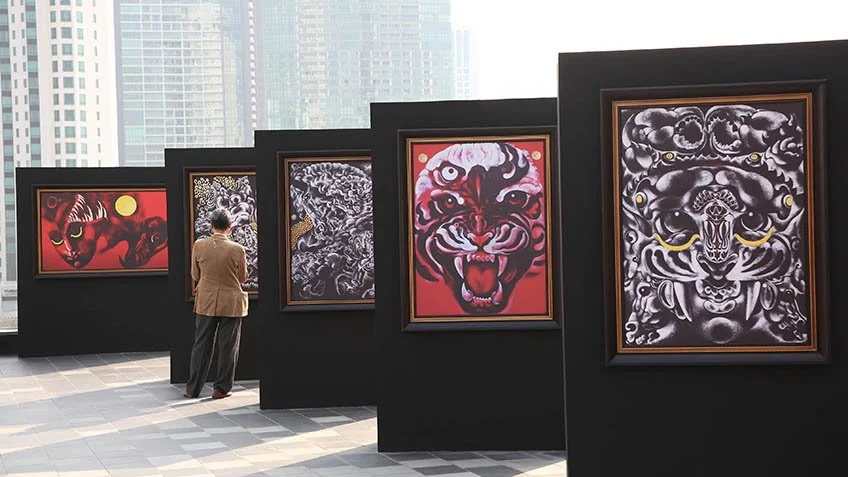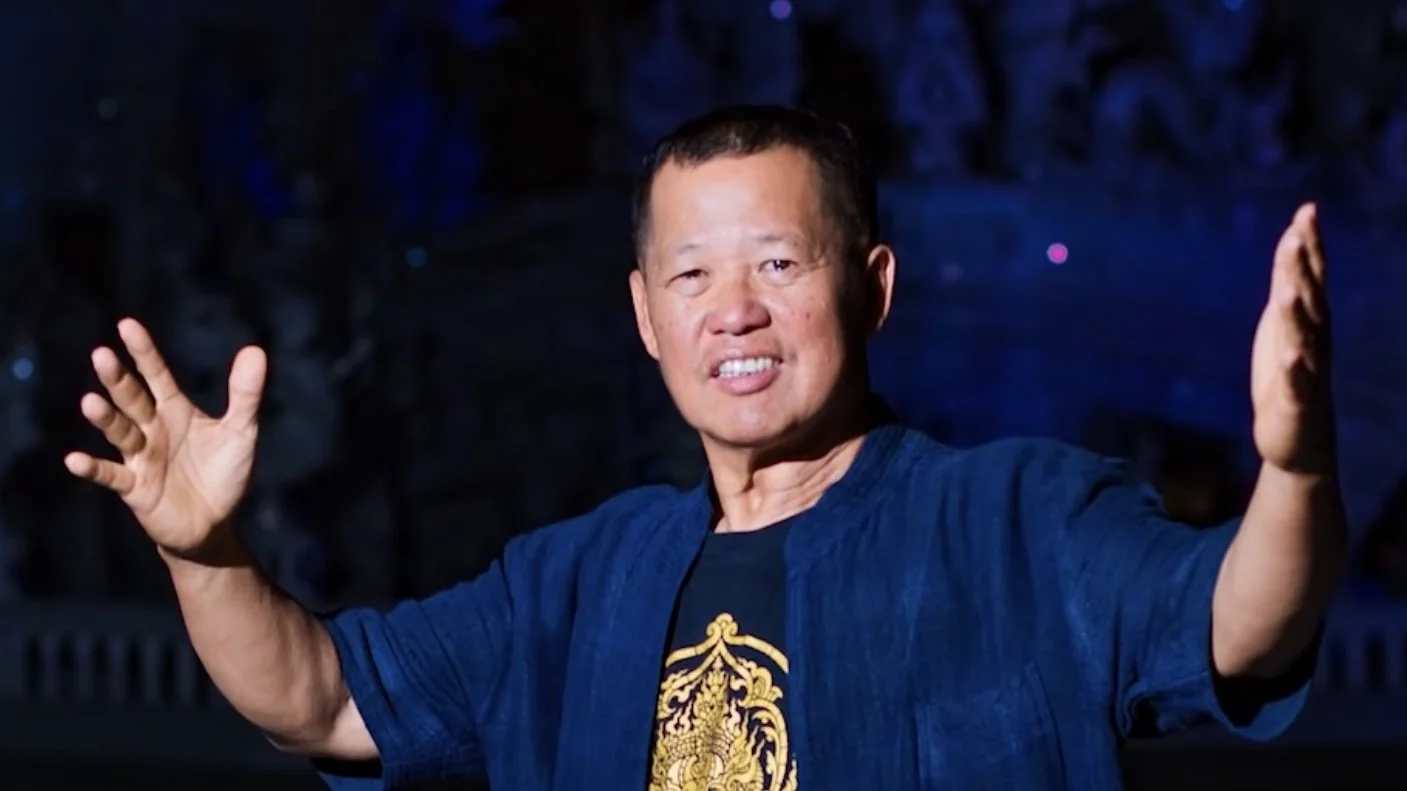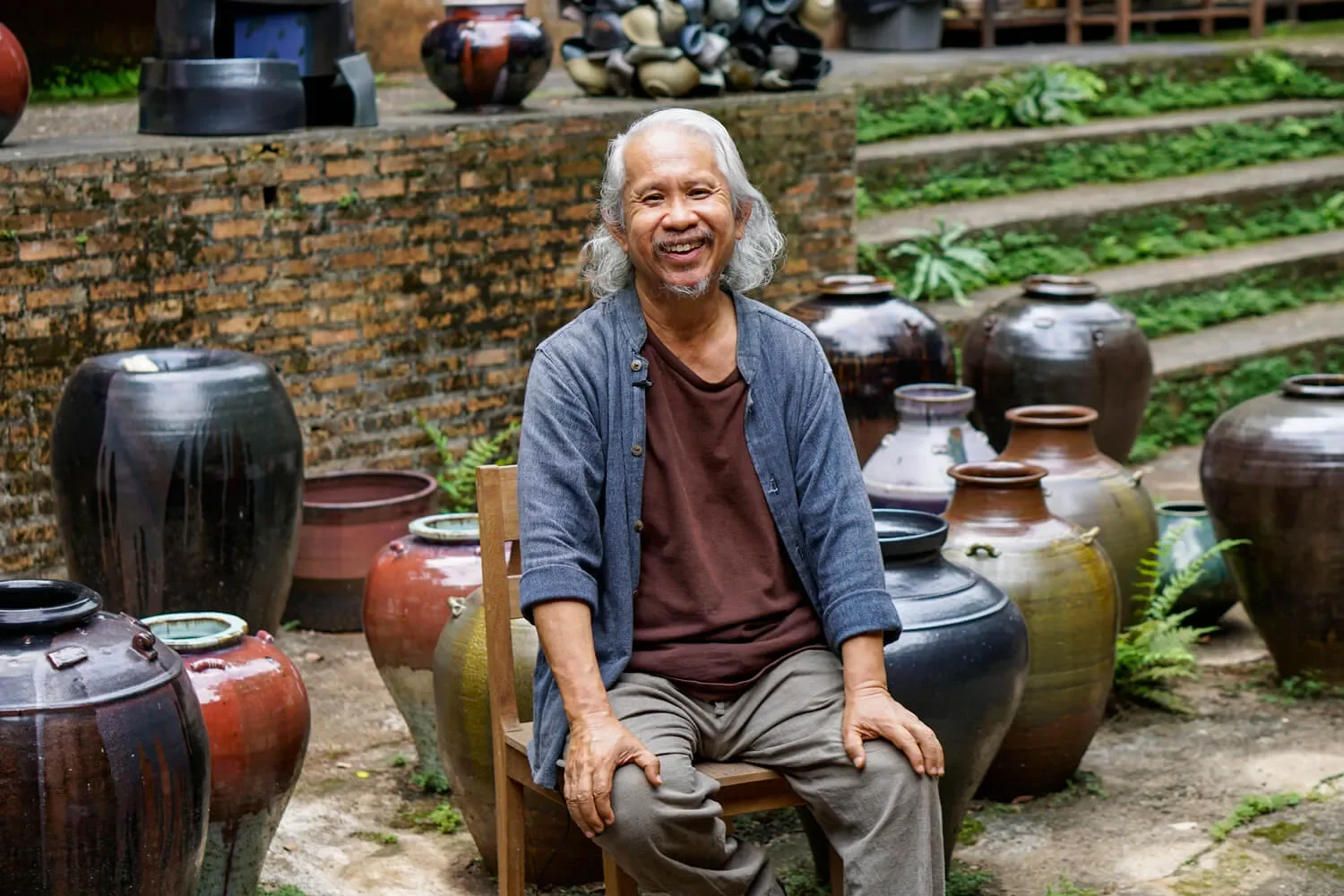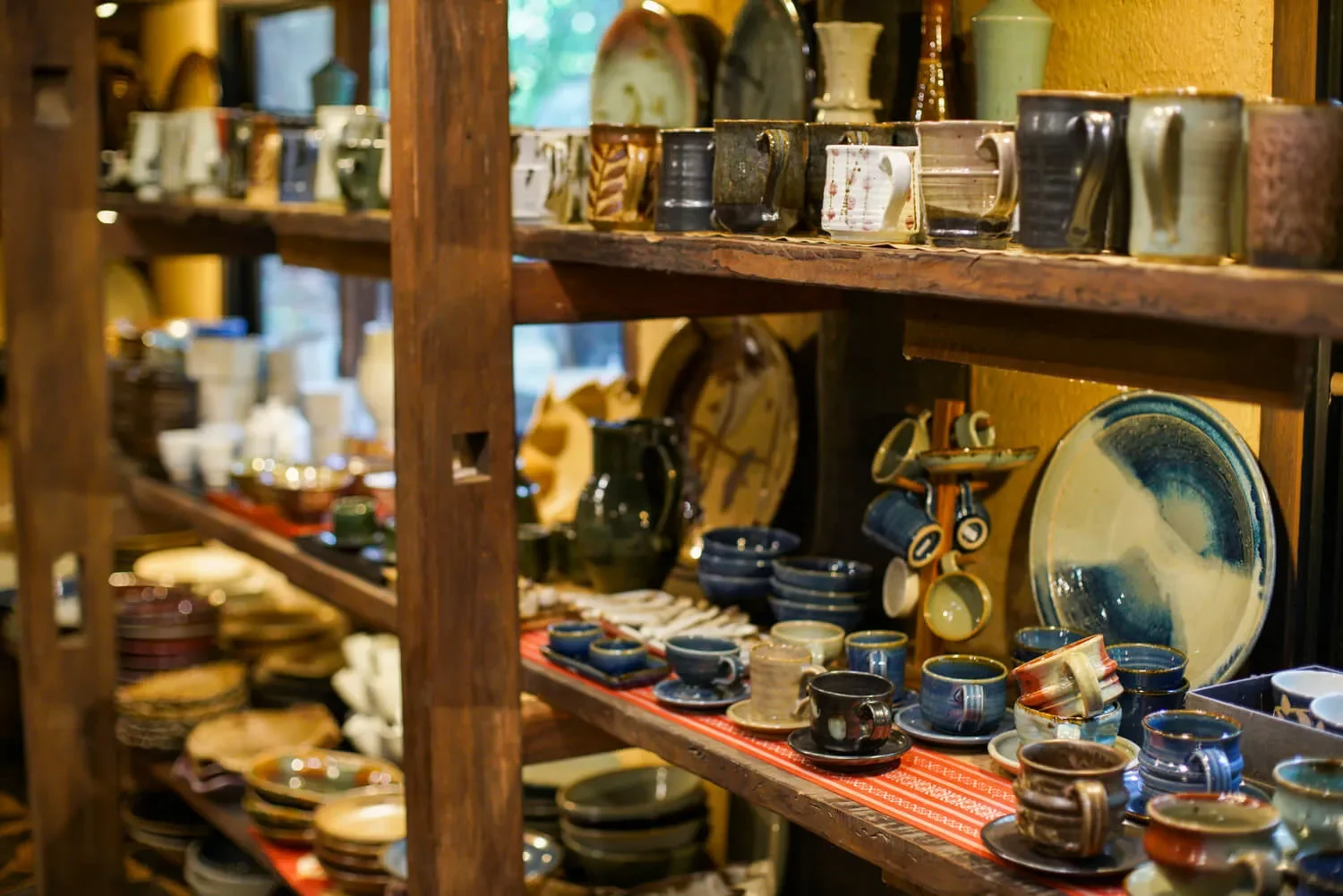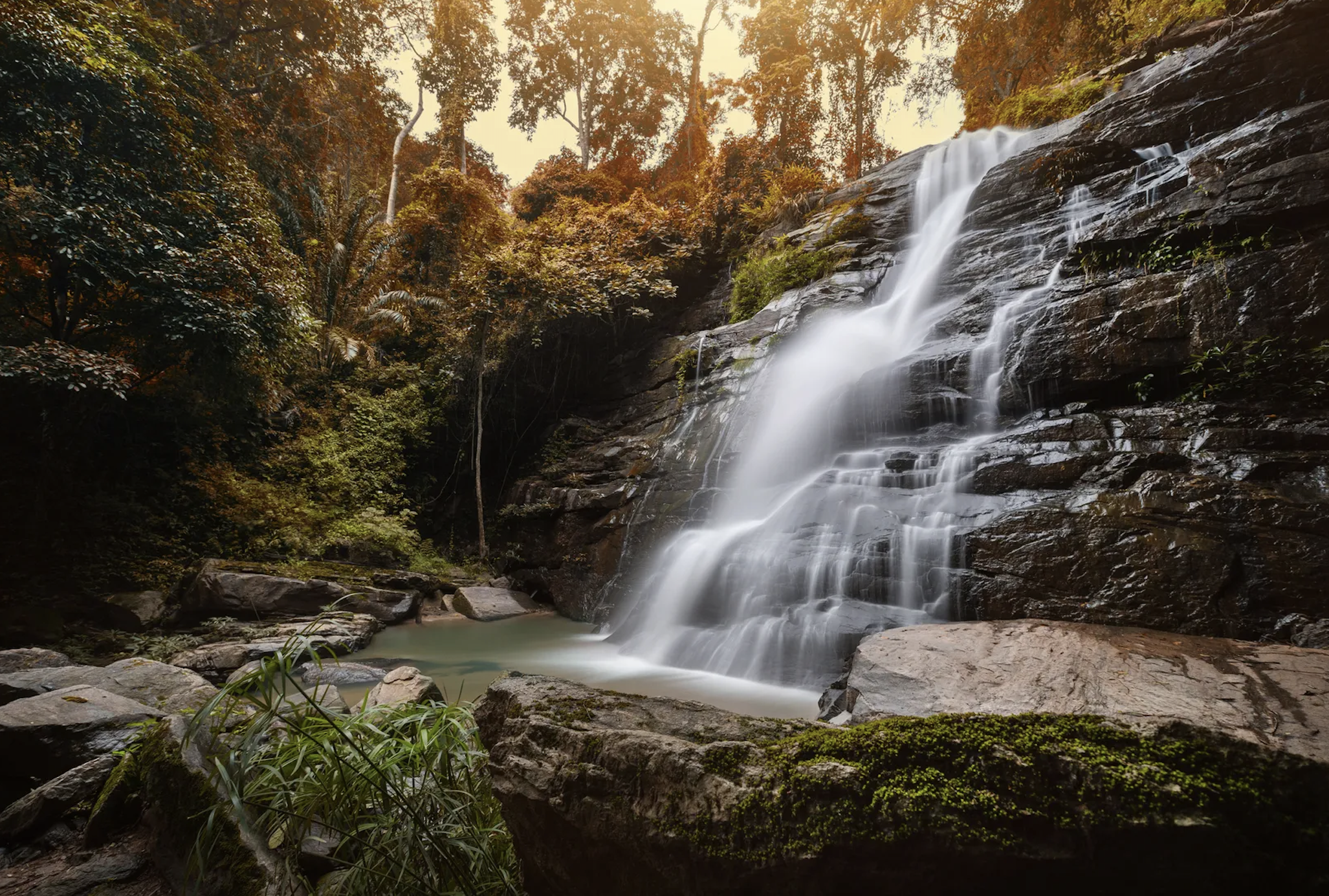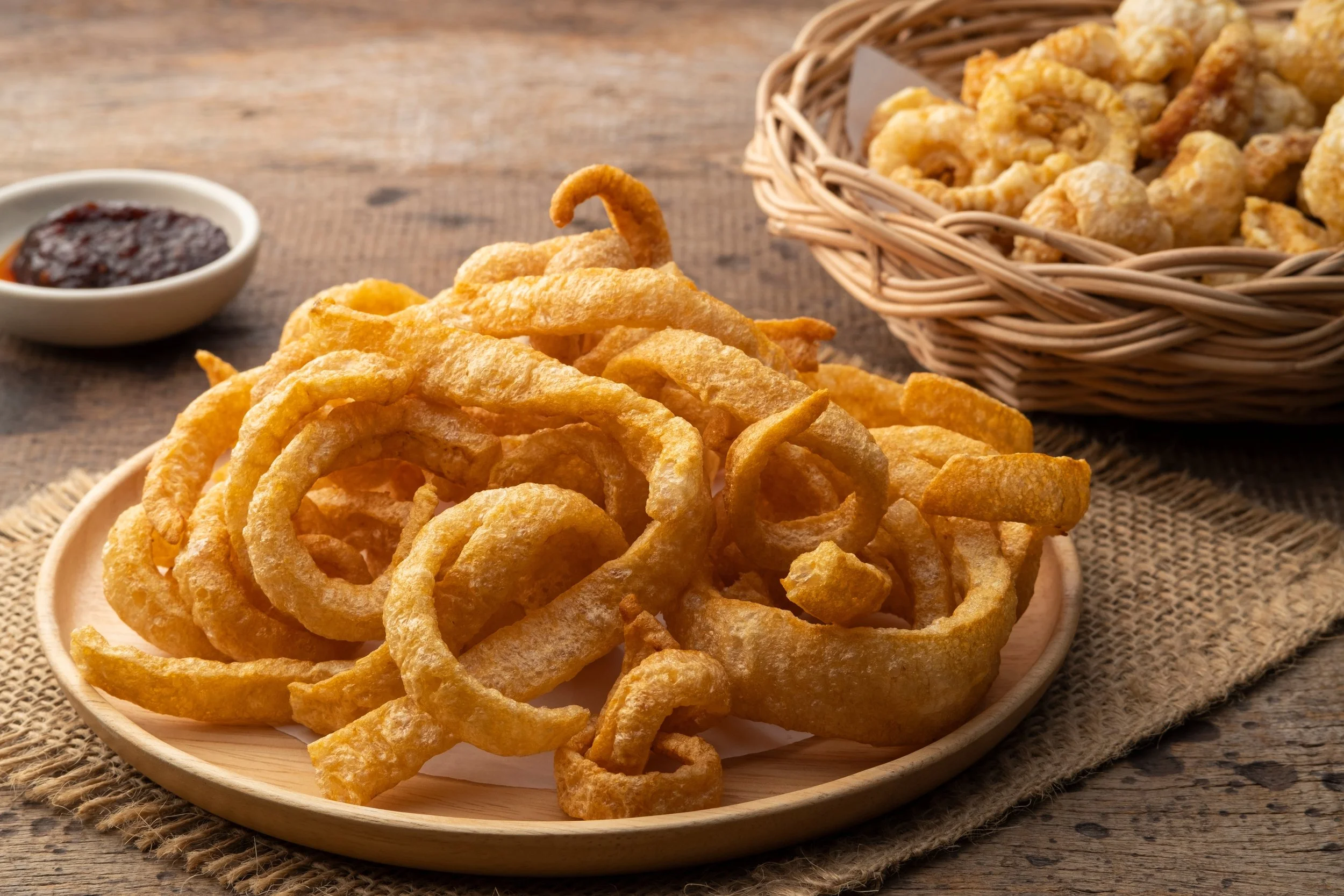
Chiang Rai
The northernmost of Siam, the frontier of three lands, the home to the culture of Lanna and Wat Phra That Doi Tung.
The northernmost province of Thailand, filled with the atmosphere of a complex mountain range and valuable Lanna culture.
Set in the mountainous far north of Thailand with a relaxed atmosphere, delicious local food, and plenty of temples to admire.
Chiang Rai
/tɕʰiaŋ raːj/ Noun
Unlike Chiang Mai, its bubbly-charactered sister, Chiang Rai offers a more serene experience—perfect for those who seek a slower pace to pause and enjoy fantastic earthly beauties and unique, offbeat attractions. If you’re looking for a peaceful escape with rich cultural depth and unforgettable views, with a dash of adventure, it’s time to put Chiang Rai at the top of your travel bucket list. ✍️
Without further ado, let’s explore the many sides of Chiang Rai — from its thriving Coffee & Tea Hub and recognition as a UNESCO Creative City of Design to its Health & Wellness retreats, rich local cultures, and diverse cuisines.

The City of Coffee and Tea
Enjoy majestic scenery with a hug in a mug.
Chiang Rai’s Legendary Tea and Coffee Culture
Whether you’re a coffee enthusiast drawn to the robust flavours of Doi Chang’s speciality beans or a tea lover seeking the delicate, fragrant brews of Doi Mae Salong’s plantations, Chiang Rai offers an unforgettable taste journey steeped in history and natural beauty.
Chiang Rai’s fertile highlands have long supported a strong agricultural identity, and in recent years, this has blossomed into something truly special: A renowned tea and coffee culture that rivals some of the best in Asia. The cool mountain air, fertile soil, and traditional farming methods combine to produce some of the finest Arabica coffee and aromatic teas in the country.
If you like Coffee,
Go Doi Tung (in Mae Fah Luang District) and Doi Chang (in Mae Suai District)! Once reliant on opium cultivation, they now thrive with the success of sustainable coffee production, which allows community-wide prosperity and the preservation and flourishing of local craftsmanship. Both DoiTung Coffee and Doi Chaang Coffee are internationally protected geographical indications (GI).
DoiTung Coffee is an Arabica species originally from three varieties: Catimor, Caturra, and Catuai.
Doi Chaang Coffee, also Arabica, is balanced in acidity with low caffeine content.
Chiang Rai Coffee Blossom Festival
Every year between late February and early March, the Chiang Rai turn into a sea of white flowers as fields of coffee blossoms bloom — signalling the start of a brand new coffee season.
The Coffee Blossom Festival is celebrated mainly on Doi Chang and nearby mountain villages such as Doi Tung, Pang Khon, and Mae Suai, home to some of Thailand’s finest Arabica beans. The coffee plantations welcome visitors from near and far to stroll and breathe in the sweet jasmine-like fragrance. Those interested can also join workshops on roasting and drip brewing, taste freshly harvested beans, and experience the hospitality of the local ethnic groups.
This festival also honours the cultural roots of coffee growing in Chiang Rai. The Akha, Lahu, Lisu, and Hmong communities, once reliant on opium cultivation, have transformed their livelihoods through sustainable coffee farming.
There are several must-visit stops if you want to experience the full depth of the region’s coffee culture:
Chiang Rai Cafés with a View
If you like Tea,
Head further north to Doi Mae Salong. This picturesque mountain village was where the defeated Kuomintang army settled after the Chinese Civil War, bringing with them centuries-old tea-growing traditions.
Today, Doi Mae Salong is famous for its high-quality oolong, green, and jasmine teas. Visit one of the local tea houses perched on the slopes, where you can sample fragrant brews while overlooking endless rows of emerald tea bushes. The experience is meditative, quiet, scenic, and steeped in culture.
You should also not miss Doi Wawi. One of the biggest and oldest Tea plantations – and allegedly the first-ever Young Twig Oolong Tea agricultural site in Thailand – tea enthusiasts visiting this highland area will be greeted with freshly brewed tea and an incredible view overlooking the quiet town.
Here are a few top spots to experience the best of Doi Mae Salong’s tea culture:

Almost forgot that this is the whole point…
Enjoy the beauty of art and designs.
Chiang Rai was designated a UNESCO Creative City of Design in 2023 for blending Lanna heritage with contemporary, people-centred design across places, products, and services—advancing wellbeing, sustainability, and inclusive local economies.
In Chiang Rai, “design” goes beyond buildings and objects. The city applies service and social design to everyday life—supporting creative businesses in areas such as tea, coffee, crafts, wellness, strengthening education and lifelong learning, and fostering a spirit of happiness and peace.
Some signature programmes that continue to elevate Chiang Rai’s status as a Creative City of Design: Chiang Rai Sustainable Design Week, CR PAO × MFU Design School Programme, Sustainable Design Centre, ASEAN-International Flower Festival, and Wellness City programme.
Chiang Rai: A UNESCO Creative City of Design
Design roots and transformation
From the Doi Tung Development Project, established in 1988, that ended opium cultivation through community-centred design, to the “Neo-Lanna” renaissance and city-shaping investments such as the Friendship Bridges and the MFU campus, Chiang Rai has become a living lab where culture and nature co-create value.
Today, there are incredible designs across Chiang Rai, each and every single one elevating the city to new heights. Here are some must-visit art spaces to inspire your creative journey:
Wat Rong Khun (White Temple)
Sea of outstretched hands grasping up beside the bridge, powerful figures of heavenly guardians, terrifying skulls and demonic faces.
Designed by Chiang Rai artist Chalermchai Kositpipat, Wat Rong Khun is a modern tribute to Northern Thai spiritual heritage. In its architecture and spirit, the pure-white building perfectly combines traditional Lanna Buddhist symbolism with surreal, contemporary elements.
Wat Rong Suea Ten (Blue Temple)
Wat Rong Suea Ten presents a fresh, contemporary take on classic Lanna-style architecture. Both the exterior and interior are a striking deep sapphire blue, adorned with shimmering gold, and at the centre sits a pure white Buddha statue.
The temple was designed by Phuttha Kabkaew, a student of the renowned Chalermchai Kositpipat.
Baan Dam Museum (Black House)
Created by Thai artist Thawan Duchanee, this striking complex of dark wooden buildings boldly explores themes of life, death, and spirituality, using Lanna architecture and provocative, symbolic art to guide the way.
Part museum, part spiritual space, Baan Dam also houses Duchanee’s art, collected artefacts, and thought-provoking installations.
Mae Fah Luang Art and Cultural Park
This is one of the most significant places in Chiang Rai for anyone interested in Lanna heritage. It houses the region’s largest collection of Lanna artefacts, including ancient Buddha images, wood carvings, textiles, and ceremonial objects. The Haw Kham (Golden Pavilion) is a stunning example of traditional Lanna architecture, built from reclaimed teakwood in homage to old Northern palaces.
Creative Souls of Chiang Rai
With its laid-back atmosphere, natural beauty, and deep-rooted cultural heritage, Chiang Rai has quietly been a haven for artists and art enthusiasts alike. From contemporary galleries and community art spaces to striking temples designed by visionary minds, this city invites visitors to explore a thriving Thai artistic landscape.
Let’s get to know some of the most notable artists from here!
Suwit Jaipom
Suwit Jaipom is a Chiang Rai–based watercolor artist celebrated for his expressive use of colour and his ability to capture the soul of northern Thai landscapes and Lanna culture.
A former President of the Kua Art Gallery Association, he has over three decades of artistic practice with exhibitions in Thailand and abroad, including Fabriano and Rome. Suwit continues to play a key role in shaping Chiang Rai’s creative and cultural identity.
Thawan Duchanee
Thawan Duchanee stands as one of Thailand’s most influential and provocative modern artists, whose bold vision redefined Thai art on the global stage. Born in Chiang Rai in 1939, Thawan fused traditional Buddhist philosophy with intense, often haunting imagery, creating a body of work that is as spiritual as it is unsettling. His deep, monochromatic palette and powerful brushwork conveyed themes of life, death, inner conflict, and cosmic struggle.
His greatest legacy is Baan Dam (The Black House), an extraordinary art complex in Chiang Rai made up of over 40 buildings.
Until his passing in 2014, Thawan remained a powerful voice in Thai art— unapologetically original and fiercely philosophical. His legacy lives on through Baan Dam, which continues to draw visitors from around the world seeking to understand the mind of a master who dared to blend darkness, tradition, and transcendence.
Chalermchai Kositpipat
Chiang Rai’s induction into the UNESCO Creative Cities Network in October was largely credited to renowned national artist Chalermchai Kositpipat, whose masterpiece, Wat Rong Khun, is prominently featured on UNESCO’s website. Born in 1955, Chalermchai has been a driving force in modern Thai art, known for resisting Western influence and promoting traditional Thai aesthetics. His contributions include two of Chiang Rai’s most well-known landmarks, Wat Rong Khun and the Clock Tower in the downtown area.
Over the years, he has earned numerous accolades, including the Silpathorn Award, recognition as a National Artist, and several honorary doctorates. Now retired, Chalermchai lives simply—devoting time to meditation, art, and motorbike adventures. His latest creation can be found near Wat Rong Khun, a mural in the making with other graffiti artists.
Somluk Pantiboon
Beginning his journey as an art-enthusiastic student working in a pottery factory, Somluk’s early experiences nurtured his deep connection with ceramics. He later took part in the UNHCR pottery project, where he taught art to war refugees in Thailand. His pursuit of mastery led him to Japan, where he studied ceramics before founding his own studio, Doi Din Daeng Pottery.
Recognised both internationally and as one of Thailand’s National Artists, Somluk’s works reflect a profound dialogue between clay, colour, and form. Through sculptures and abstract paintings, he conveys the essence of local cultures while balancing traditional techniques with contemporary experimentation.

Level Up Your Chiang Rai Itinerary!
We mean it literally. Let’s hike those trails and test your strength (the view is certainly a plus).

Digital Nomad in Chiang Rai
If this lifestyle is your cup of tea…
Beyond being a city of artistic inspirations, heritage, and natural beauty, Chiang Rai has also developed into a city suitable for digital nomads from all around the world. With its more relaxed atmosphere compared to a busy capital like Bangkok, Chiang Rai might be what the more laid-back digital nomads and those who value quiet times to sit back and relax are looking for.
🩵 Safety
Chiang Rai has proudly been ranked as the second safest city for female digital nomads in 2025 by Nomads.com. It also has a small by active community of digital nomads but if you feel like connecting with the locals, Chiang Rai people will certainly welcome you with open arms!
🧑💻 Workspace & Internet
While Chiang Rai do not have a dedicated workspace as of now, the city has an aray of cozy, modern co-working cafés, with strong wifi one can choose to frequent. It also has reliable internet infrastructure sufficient for a range og online activities, from video calls to large file transfers!
💰Cost of Living
According to Nomads.com, the average monthly cost of living in Chiang Rai is around THB 36,000, though a comfortable lifestyle is possible with THB 25,000–30,000 per month.
Accommodation near the city centre typically ranges from THB 6,000–10,000 per month, with prices decreasing the farther you move from town. Two recommended areas are Central Chiang Rai, for its convenience, and Mae Fah Luang, for its tranquillity. Wherever you choose to settle, getting around is easy with motorbikes or ride-hailing services!
Food expenses range from THB 5,000–12,000 depending on whether you mostly cook at home or dine out. Meanwhile utilities such as internet, water, and electricity usually cost around THB 1,500–3,000 per month.

#FoodisLife
Thai hospitality rule #1: You are not leaving on an empty stomach, never.
Chiang Rai’s food scene is a mixture of Northern Thai flavours, a hint of ancient Lanna heritage, and a dash of ethnic groups’ influences.
But where to begin? If you are a traveller new to Thai food—or simply curious about how adventurous your taste buds can be—we have got you covered. Below is a guide to must-try Chiang Rai dishes, organised by a simple ⭐️ star system:
⭐️ = Mild, tourist-friendly, ⭐️⭐️ = Moderate spice, bold flavours , ⭐️⭐️⭐️ = Adventurous, for the brave and curious
Main Courses
Side Kicks
Snackity Snacks
Unique Traditional Food
📍Must-Try Local Restaurants in Chiang Rai
Larb Sanam Keela - A favourite among locals, this restaurant specialises in Northern Thai meat dishes like Larb Moo (spicy minced pork salad) and grilled pork. Known for its authentic flavours and casual atmosphere.
Lulum Restaurant Chiang Rai - Set along the Kok River, Lulum offers a scenic dining experience with traditional dishes such as Gaeng Hang Lay and Nam Prik Ong.
Por Jai Restaurant - Known for its creamy coconut curry noodle soup, this spot serves up classic Khao Soi with options like chicken and beef.
Nam Ngiaw Mor Din Pa Aeed - Specialising in Nam Ngiao, this eatery is a go-to for those seeking traditional flavours in a simple setting.
PAAM - This downtown restaurant fuses local Northern Thai dishes with international cuisine, featuring items like fried rice with Sai Ua and Nam Prik Ong spaghetti.
Roti Pa Yai - Located in the Muslim community area, this eatery serves authentic halal dishes such as Roti Mataba Gai (chicken-stuffed roti) and Gaeng Gari Gai (Yellow curry with chicken).
Moom Mai Restaurant - Known for its traditional Thai ambience with garden-like decor, Moom Mai offers Lanna cuisine and Chinese-influenced dishes, including crispy catfish with mango salad.
Chiang Rai Night Bazaar - A vibrant market offering a variety of local street foods, including Thai hot pot, grilled seafood, and mango sticky rice, along with live performances.
🍽️ Where to find the unique traditional dishes
Rooted in rural kitchens and ethnic groups’ traditions, these dishes are bold, rare, and culturally significant. While you won’t typically find them on tourist menus, they can be discovered in local markets, family-run eateries, or village homes if you know where to look.
Larb Sanam Keela (ร้านลาบสนามกีฬา) 🍖 – for raw and grilled meats like Koi Neua and Larb dishes.
Night Bazaar or Walking Streets 🌙 – for fried insects, Naem, and occasional Kai Mot Daeng (red ant eggs).
Local fresh markets 🧺 (e.g., Chiang Rai Central Market, Kad Luang) – for delicacies like Rot Duan and Maeng Mun.
Ethnic village visits 🏞️ (e.g., Akha or Lahu villages) - may offer truly local, home-cooked versions of these dishes.
🔥 Final Tip:
Don’t be afraid to ask vendors to tone down the spice if you’re unsure. Chiang Rai locals are proud of their cuisine and equally welcoming to curious eaters!
So whether you stick to creamy Khao Soi or venture out for more adventurous dishes, one thing’s certain: Chiang Rai will surprise you with flavour, heat, and heart in every bite.

Into the Hills of Chiang Rai.
Weaving a meaningful thread into your Chiang Rai journey.
Although Chiang Rai has progressed to become one of digital nomads’ ideal cities with its technological advances and developments, its ties to the ethnic groups remain strong as ever. 🌿👣
Chiang Rai’s ethnic group communities have preserved their rich cultural heritage, languages, traditional clothing, and unique ways of life, with many opening their villages to visitors through homestays, cultural demonstrations, and unique opportunities to learn about local customs, crafts, and food.
If you would like to know more about these communities, head to the Hill Tribe Museum and Education Center. The exhibitions will give you a better understanding of how the Akha, Hmong, Karen, Lahu, Lisu, and Yao ethnic groups lead their way of life — a great way to educate yourself before a visit!
💡 Reminder: Ethnic groups’ communities are real, living communities and not cultural exhibits frozen in time. Like all societies, they continue to adapt and change with the world around them. Some villages may display modernity and look more commercialised, while some may cater more towards cultural learning. Despite these differences, the continuation of all such villages serves as a way to preserve ethnic traditions and culture.
Visiting the tribes is not “Show Time”, it’s “Show Respect Time”!
Each Indigenous community in Chiang Rai has its language, dress, traditions, and way of life. Meeting these tribes can be an enriching and eye-opening experience. However, as tourism continues to expand into the most remote corners, it is more important than ever to approach these encounters with thoughtfulness and respect.
If you are planning to visit Indigenous villages in Chiang Rai, here are some guidelines on how to do so ethically and responsibly:
Not all tours are created equal. Some are designed with community benefit in mind, while others may be more focused on profit, often at the expense of the local people.
Look for tours that:
✔️ Are locally owned or community-led
✔️ Share profits with the village
✔️ Limit group sizes
✔️ Emphasise education and cultural exchange—not performances
🤝 Choose a Responsible Tour Operator
Many tribes have customs that may differ from what you are accustomed to. Showing respect by learning and adapting speaks volumes.
Dress modestly.
Observe before acting and Do NOT assume: Wait to be invited before taking part in a ritual or entering a home.
🛕 Respect Culture & Sacred Spaces
It may be tempting to reach for your camera, but remember that not everything is yours to capture.
🤲 Always ask permission first, especially when photographing people.
🚫 Do NOT offer money in exchange for photos. This can turn genuine interaction into a transaction and disrupt local dynamics.
📸 Ask Before Taking Photos
A great way to give back is by supporting local businesses and craftspeople.
🧶 Buy handmade goods such as textiles, jewellery, or carvings directly from artisans.
🛍️ Skip the mass-produced souvenirs.
🍛 Eat at family-run guesthouses or community kitchens if offered.
💰 Support Local Economies Directly
Ethical travel is all about engaging with intention. Sometimes, that means being present in the moment.
Before you step into the Indigenous communities of Chiang Rai, try putting your phone on silent and your camera back safely in its pouch. Make this the time to open your mind, sit and listen, watch and learn, and even join in on local activities (if invited, of course) without needing to capture or share every moment with the world.

Now,
Let’s Go, Shall We?
Getting there:
From Chiang Mai to Chiang Rai
Chiang Rai is located about 180 km north of Chiang Mai. One of the most common ways to travel between the two cities is by bus:
3–4 hours, around THB 300 (≈ $9) one way
Depart from Chiang Mai Bus Terminal 3, arrive at Chiang Rai Bus Terminal 1
From Bangkok to Chiang Rai
Plane:
1.5 hours, around THB 2,500–4,000
Depart from Don Mueang (DMK) or Suvarnabhumi (BKK), arrive at Mae Fah Luang International Airport (also known as Chiang Rai Airport or CEI)
Overnight Bus:
11–13 hours, around THB 620–990 (varies by class and comfort)
Depart from Mo Chit Bus Terminal, arrive at Chiang Rai Bus Terminal 2
Train + Bus:
Train: Bangkok to Chiang Mai (10–13 hours, THB 300-1500 depending on time and class) + Bus: Chiang Mai to Chiang Rai (~3 hours, around THB 300)
Private Car or Transfer:
11–13 hours, great option for road trippers or groups wanting flexibility
Getting around:
Songthaews (public trucks with two-row seats) – Great for short distances around town and a fun local experience.
Rental Bikes or Bicycles – Many guesthouses rent them, and the city is fairly bike-friendly.
Tuk-tuks & Private Drivers – If heading to remote areas, hiring a local driver for the day can be a great option.
Apps: Bolt, Lineman, Grab – Convenient for quick rides and more comfortable transport, especially within the city.




